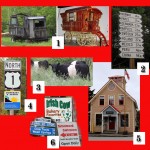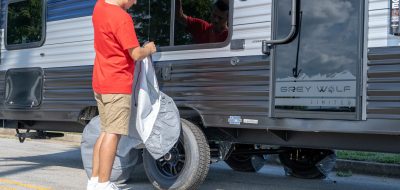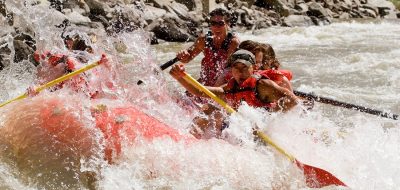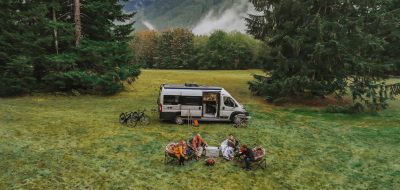A dust storm usually arrives suddenly in the form of an advancing wall of dust and debris which may be miles long and several thousand feet high.

In a scene reminiscent of the 1930s Dust Bowl, on October 18, 2011, Lubbock, Texas went from light to dark in an instant, as the 8,000 foot dust cloud, traveling at a whizzing 70 mph, swept through. (Image via YouTube)
Dust storms that turn day into night are a hazard to drivers. Dust storms can strike with little warning. Blinding, choking dust can quickly reduce visibility, causing accidents that may involve chain collisions, creating massive pileups.
Dust Storms are among nature’s most violent and unpredictable phenomena. High winds lift dirt particles or, in the case of sandstorms, sand, into the air, unleashing a turbulent, suffocating cloud of particulates and reducing visibility to almost zero in a matter of seconds.
Nearly all dust storms are capable of causing property damage, injuries, and deaths, and they can occur in any arid or semi-arid climate.
Dust storms usually last only a few minutes, but the actions a driver takes during the storm may be the most important of his or her life.
No matter where you live, it’s a good idea to know what to do if you see a wall of sand racing toward you.
1. Heed Dust Storm Warnings
Since dust storms are most likely to occur on hot summer days under certain atmospheric conditions, meteorologists can frequently predict the possibility of these storms.
During threatening weather listen to commercial radio or NOAA Weather Radio for Dust Storm Warnings.
A Dust Storm (or Sand Storm) Warning means: Visibility of ½ mile or less due to blowing dust or sand, and wind speeds of 30 miles an hour or more.
2. Be Prepared

A massive dust storm descended on the Phoenix area on Tuesday, July 5, 2011, drastically reducing visibility and delaying flights as strong winds toppled trees and caused power outages for thousands of residents in the city. (Source: disastersurvivaltools.com)
If you are in a storm-prone area, carry a mask designed to filter out small particulates, and bring airtight goggles to protect your eyes. It’s also wise to carry a supply of water in case you are stuck in a storm. Dust storms are usually accompanied by high temperatures, and you can quickly become dehydrated in the dry heat and high winds. Wear or carry clothing that covers your body to protect you from the sandblasting.
3. Outrun the Storm?
If you see a dust storm from some distance, you may be able to outrun it or detour around it. Some dust storms can travel at more than 75 miles per hour, but they frequently travel much slower.
Trying to outrun a storm, however, is not advisable if you have to put yourself at risk by traveling at high speeds. If the storm is catching up with you, it’s best to stop and prepare for it. Once consumed by the storm, your visibility can potentially be reduced to zero in a matter of seconds.
4. Pull Over
If you’re driving a vehicle and visibility drops to less than 300 feet, pull off the road as far as possible (exit the freeway if possible), set your parking brake, turn OFF your lights, make sure turn signals and emergency flashers are off, and take your foot off the brake pedal to ensure the tail lights are not illuminated.
If your exterior lights are on, other drivers will use the taillights of the person in front of them as a guide to help navigate the road ahead of them. If you are pulled off the road and are sitting there with your lights on, unbelievably, someone might think they can follow you and run right off the road or even collide with you! Turning your headlights off while stationed off the road, will reduce the possibility of a rear-end collision.
Never stop on the traveled portion of the roadway.
If you are NOT able to safely pull off the road, keep your headlights on, turn on your emergency flashers, slow down, and proceed with caution, sounding your horn periodically. Use the highway’s centerline to guide you if you can’t see in front of you. Pull over at the nearest safe spot.
5. Take Cover and Stay Put
Do not attempt to move about in a blinding storm, as you will not be able to see potential hazards in your path.
Roll up the windows and turn off vents that bring outside air in.
DO NOT enter a dust storm. If you can avoid getting caught in a storm, do not tempt fate.
Please Note: This is Part 1 of a 2-part series on Surviving Dust Storms
Part 2: Pull Aside & Stay Alive
Worth Pondering…
Houses were shut tight, and cloth wedged around doors and windows, but the dust came in so thinly that it could not be seen in the air, and it settled like pollen on the chairs and tables, on the dishes.”
—John Steinbeck, The Grapes of Wrath
You May Also Like
- Want a Room with a View? Rent a Fire Tower
- All in CARAVANING 2013 Scheduled for China National Convention Center
- Redevelop RV Park for Bakken Shale Boom
- Roadtrek Introduces CS-Adventurous Class B
- More Americans Plan a Road Trip This Summer
If you enjoy these articles and want to read more on RV travels and lifestyle, visit my website: Vogel Talks RVing.







